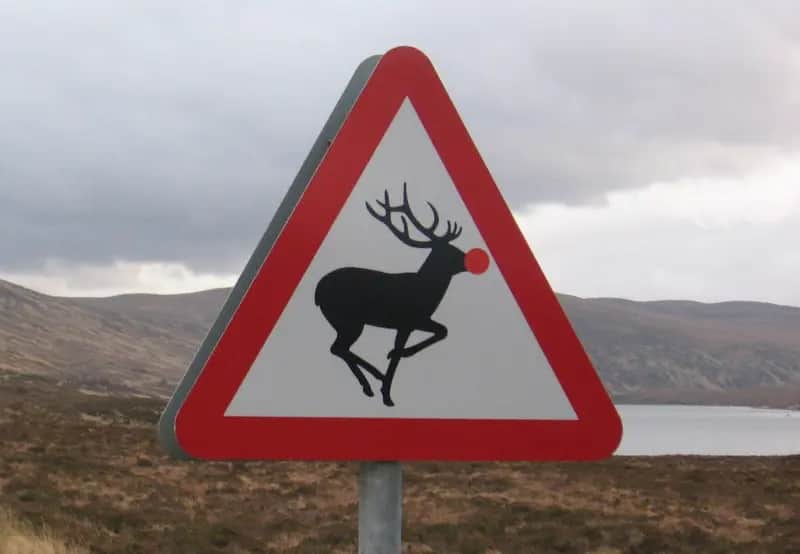A LITTLE KNOWHOW IS VITAL WHEN YOU'RE GEARING UP FOR WINTER

WINTER AT ITS BEST: Deep soft snow and blue sky on a perfect mountain day at the summit of Sgurr na Sgine in Glen Shiel

TRICKY MIX: Soft snow, hard ice
THE first snowy shots of the coming winter have been fired, a tantalising taste for those who love the mountain landscape wrapped in a white blanket.
The main event is still a bit away; instead we have a series of freeze-thaw skirmishes which result in sudden and dramatic day-to-day changes, with a constant shifting of temperatures.
The signs are all pointing north, however. The calendar is filling up with dates of winter safety lectures, and it won't be long before the invaluable Scottish Avalanche Information Service is back in daily operation.
The ice axes and crampons are on standby, even though they may not yet be needed. It's not just a case of having them – you need to know how to use them and when to use them. Unless the conditions are right, they can often do more damage than good.
There's a great Scots phrase, 'Aw the gear, nae idea', which goes some way to summing up the situation. It was originally aimed at the likes of middle-aged, moneyed, middle-class men who took up a sport like golf, tennis or cycling, and threw themselves and their spending power somewhat over-enthusiastically into buying the whole kit and caboodle before even finding out if it was the right thing for them. Failed dreams are the food and drink of ebay.
Ski-ing is another example where fashion and looking good often becomes more important than the sport for a certain clientele, and in recent times it has become more noticeable in certain hillwalking circles.
One famous mountain guide used to snort with derision at some of the amounts folk were willing to shell out for the latest gear. He reckoned that manufacturers would stick in a couple of extra zips to justify a £50 price hike. Less zips, not more, was almost a mantra. Another zip, another possible source of water ingress.
For the inexperienced and the unprepared, winter walking is a serious step up. There are so many unpredictables, so many potential hazards to factor in.
Walks take longer in deep, soft snow; book times go out the window. Rivers can quickly become dangerous, even impassable, leading to the possibility of long, time-consuming diversions to safety.
Navigation skills have to be enhanced. In a white-out, or when obvious paths are buried, you will need to know your ground as you navigate blind. There's the prospect of straying too close to cornices, of avalanche danger on unstable snow slopes.
Head torches are a must; it pays to carry two at this time of year. Make sure you check them thoroughly before setting out and always carry spare batteries.
There are many places offering winter skills courses. Apart from the obvious good practice with the likes of ice axe arrest techniques and walking with crampons, these courses provide the building blocks for confidence in mountain terrain.
It's not just a case of buying a pair of crampons, strapping them on and heading straight out on to the hill. It could be that you will have to put them on and take them off again several times during a walk, and you need to be able to do this in the most extreme conditons. Fitting a pair on your boots in the middle of a raging blizzard while wearing thick gloves is not easy – it has to be practised.
Many years ago, I took a call from friends asking me to adjudicate in a domestic dispute. For the purposes of this tale, I shall refer to them as John and Mary. I'm not suggesting they were as extreme as the feuding couple in Father Ted, but at times some of us felt they must both have had black belts in marital arts.
It was easy to understand how the discussion had spiralled out of control. What had started with the best intentions had heated up through a continual ping-pong of point scoring to the need for a referee. Mary had decided she wanted to accompany a friend up Ben Lomond. As it was February and the hills were snow and ice covered, and neither had any hill experience, John thought this was a bad idea.
Undaunted, she pressed on. He then pointed out she would need full winter kit, including crampons. I can borrow it, she said. Madness, he said. Then came the call. John asked me if I would have a word. An obviously irate Mary asked if I would lend her crampons and an axe. The answer could only be No.
Much as I admired her ambition and determination, I could not encourage two inexperienced walkers to head off on a serious winter mountain walk with borrowed gear they had no idea how to use.
I did explain my reasons and suggested they leave the walk until spring. She seemed placated but I've no idea what happened when she got off the phone. It was never mentioned again and there were no reports of any injuries, either on the hill or in their house.

